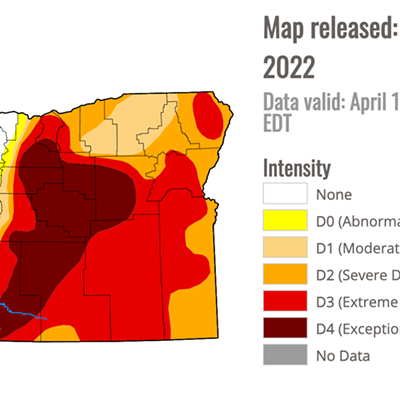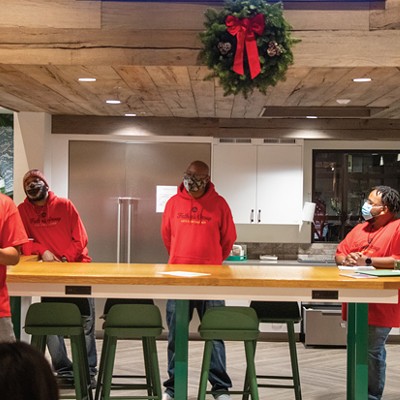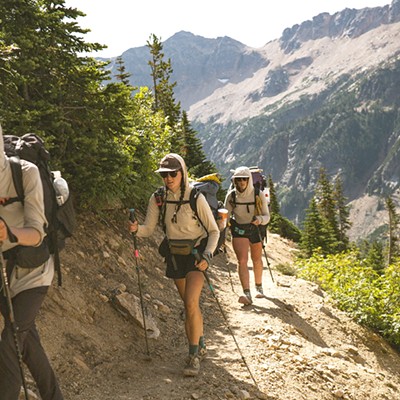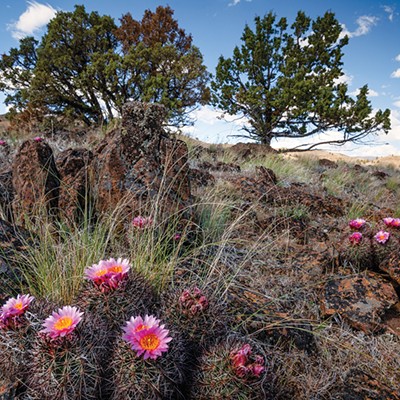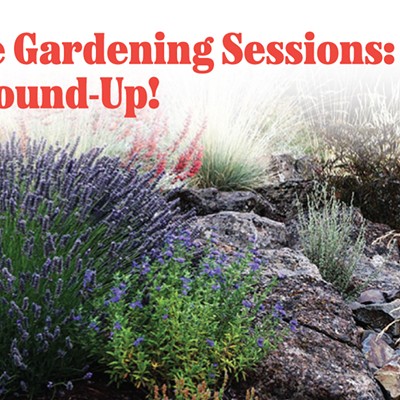In some social circles the term "great old broads" might be considered offensive. However, the Great Old Broads for Wilderness are proud of the label. The organization was formed in 1989 as a protest to Utah Sen. Orin Hatch who opposed a wilderness proposal in his state, declaring that wilderness is inaccessible to the elderly because it doesn't allow for roads. "If for no other reason, we need roads for the aged and infirm," he stated. Incensed by that notion, a group of mature women who loved to hike in wilderness areas where roads are banned stood up to Sen. Hatch and formed the Great Old Broads for Wilderness. On one hike, someone remarked, "What a bunch of great old broads." The name stuck. Today the organization boasts 5,000 members in 36 chapters, including one in Central Oregon.
Joanne Richter is co-leader of Central Oregon's Great Old Broads—who call themselves "Bitterbrush Broads"—and she is proud of their activism. Among their many activities, the bitterbrush chapter conducts educational hikes called "broad walks." Richter is one of a group that recently hiked through the Oregon Badlands Wilderness east of Bend. "The Great Old Broads for Wilderness inspires elders to engage in activism for the protection of wilderness and public lands," she says. Richter also says that the group is dedicated to hands-on service such as repairing trail systems. Earlier this year they organized a large rally in Bend to protest the armed takeover of the Malheur National Wildlife Refuge. Recently, they went on record with the U.S. Forest Service as opposing a proposal for a 130-mile off-highway vehicle trail in the Ochoco National Forest.
Katya Spiecker, although young, is considered to be a "broad in training." She is concerned with what she feels is a lack of wilderness areas in Oregon. According to statistics provided by the conservation group Oregon Wild, four percent of Oregon is protected as wilderness, while California boasts 15 percent, Washington 10 percent, and Idaho 9 percent. "It's an alarming statistic," Spiecker says, explaining that the Great Old Broads for Wilderness is a strong supporter of designating the Owyhee Canyonlands as wilderness. A 2.5 million-acre wilderness proposal for the Owyhee Canyonlands has been heavily promoted by the Oregon Natural Desert Association and other groups, but it has been met with much local opposition in southeast Oregon.
Martha Bibb, an avid hiker and mountain biker, joined the broads for the Badlands Wilderness hike. Although a strong advocate of mountain biking in specially designated areas, she is opposed to allowing them into wilderness areas. "I don't believe that any wheeled vehicles belong in the wilderness. I think its counter to the concept of wilderness," she says. Bibb says mountain bikes cause rutting and erosion of trails. She says mountain bikers go off trail when they encounter hikers, widening trails and leading to further erosion. "You don't need bikes in wilderness areas. In my opinion, wilderness is for foot traffic." She is also opposed to the use of horses in wilderness areas.
Serving as hike leader, Shinann Earnshaw was the eldest of the broads on the Badlands Wilderness outing. Earnshaw, who lived in Chile for 12 years, recently returned to Bend. As chair of the local Sierra Club chapter, she was one of the early leaders to help create the Badlands Wilderness and is gratified that the designation was secured during her time away. "It was known as a place where teenagers went to hang out and party, and that was distressing." Earnshaw explains that the desert area is much more than a barren landscape. "It has a lot of ecological importance in supporting vegetation, birds, animals, and wildlife that depend on the desert," she says.
The Oregon Badlands Wilderness, approximately 15 miles east of Bend, was created by the Omnibus Public Land Management Act of 2009. It encompasses more than 29,000 acres in Deschutes and Crook counties and is managed by the Bureau of Land Management. The area was shaped by numerous lava flows from Newberry Crater over thousands of years. Soils were formed with ash from the eruption of Mt. Mazama (Crater Lake) approximately 7,700 years ago. The wilderness contains some of the oldest juniper trees in the world.
Great Old Broads for Wilderness
Central Oregon Bitterbrush Broads

